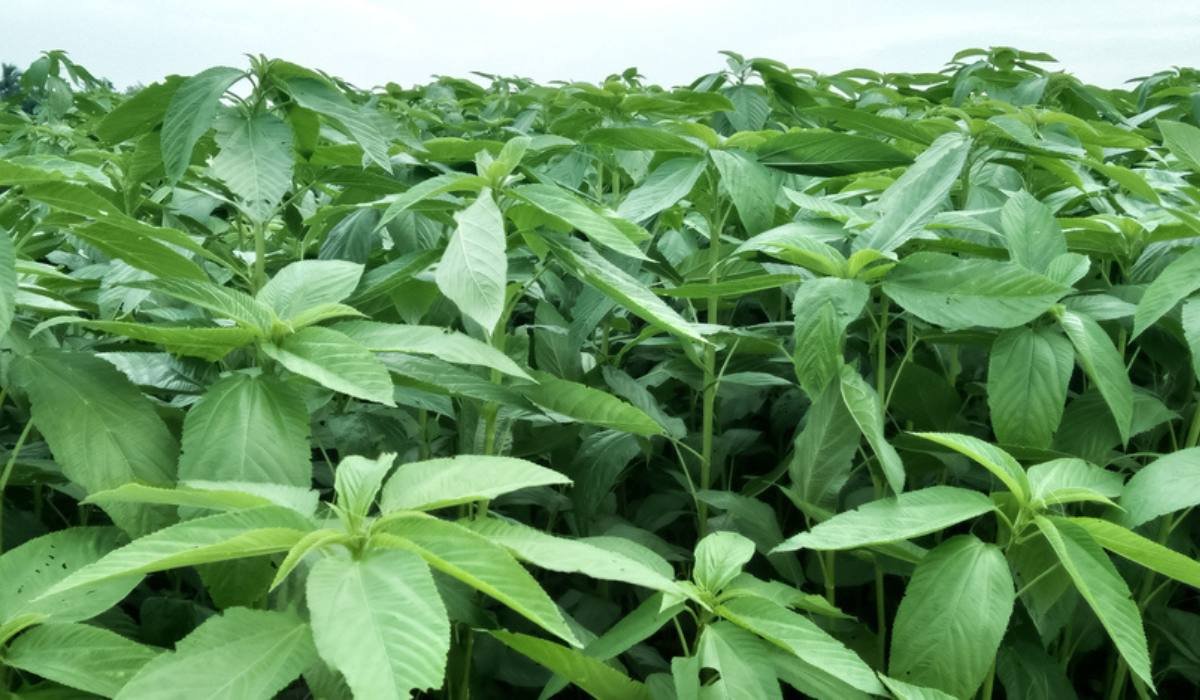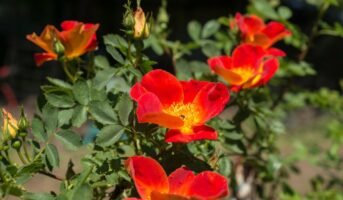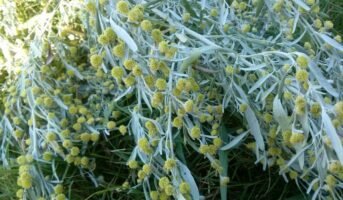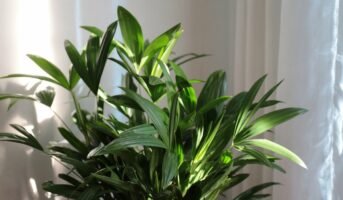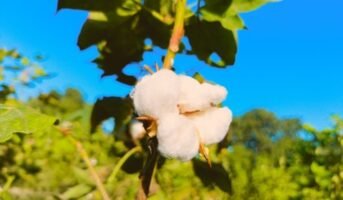Corchorus capsularis is a small shrub that is grown as a primary crop in many countries. It is best known by its common names like white jute and patsun. This is a shrub species in the family Malvaceae. It is closely related to Corchorus olitorius, which is traditional jute.
However, this variety of jute is finer and more superior than normal jute. The plant finds its origin in China, India, and Bangladesh. Corchorus capsularis is widely grown in these countries and exported to other nations.

Source: Pinterest
Corchorus capsularis plant is an erect, annual shrub and has large green leaves. Flowers appear on the plant seasonally and are yellow-coloured with five petals. It is mostly grown in vast fields and pastures and sowed in huge quantities. Jute obtained from the plant is used for making handicraft items and clothes. Other parts of the plant are used for their medicinal value.
Corchorus capsularis: Key facts
| Name | Corchorus capsularis |
| Common name | White jute |
| Origin | China, Bangladesh, India |
| Type | Shrub |
| Height | 12-15 feet |
| Soil | Loamy soil |
| Temperature | 20-30°C |
| Sunlight | Full sun |
| Water | Plenty |
| Fertiliser | Compost and manure |
Corchorus capsularis: Cultivation
- The plant requires very fertile soil and a hot, humid climate. The pH range of the soil should be between 5.1 and 6.8. Aside from its fibre, the leaves are edible.
- As a half-hardy annual, this species can grow better in areas that are warm.
- The yield of green plants is about 34 tonnes/ha, and the yield of dry retted fibre is about 2 tonnes/ha
- Many of the plants are grown in areas inundated by water every year and enriched with deposits.
- Plants with short days have a longer vegetative phase, so they are sown when the day length exceeds 12 hours.
Corchorus capsularis: Maintenance tips
- It is recommended that jute crops be irrigated twice. The first irrigation is to be administered after sowing, the second irrigation on the fourth day after sowing, and the third irrigation 15 days after sowing.
- Broadcasting and line sowing are two ways to sow seeds.
- After the first weeding, apply 10 kg of N, and then 35 – 40 days after the second weeding, apply another 10 kg of N.
- For leaf shedding, jute plants are left in the field for 3 to 4 days. Plants of different thicknesses are then sorted and bundled into convenient sizes.
Corchorus capsularis: Benefits
Corchorus capsularis is mostly grown for its nutritional value. It is grown as a food crop for medical and commercial purposes. Corchorus capsularis has a tonne of health benefits that make the plant extremely useful. It can be consumed and used to treat a variety of illnesses related to the stomach, eyes, and heart.

Source: Pinterest
Here are some amazing health benefits of Corchorus capsularis or white jute:-
-
Boosts eye health
Corchorus capsularis has a high nutrient value that helps combat nutrient deficiencies. Most of the nutrients contained in the plant help improve eye health. Corchorus capsularis has a high Vitamin B6 and folate content that helps boost eye health and protects it from diseases.
-
Antioxidant properties
White jute or Corchorus capsularis leaves have high Vitamin E, A and C content. These nutrients are known for their antioxidant activity, which can protect the cells from free radicals. The antioxidants help in protecting cells from damage and aid their regeneration.
-
Fights viruses and colds
Vitamin C is known to strengthen the immune system and helps to fight against common colds and coughs. People who have weak immunity are recommended to have jute leaves to boost their immune system. Additionally, jute leaves can prevent the spread of infection and save the body from diseases like pneumonia and flu.
-
Benefits the digestive system
Jute leaves are known for their fibre content as well. Dietary fibre is an essential component of one’s daily diet because it helps the digestive system work better. It can help combat digestive problems like constipation which can have a lot of side effects on the body.
-
Anti-inflammatory properties
White jute has anti-inflammatory properties that can help in reducing swelling and infection. The antioxidants present in the leaves of Corchorus capsularis can reduce inflammation and provide relief from pain. It can control infection by bringing down swelling and cooling the area.
-
Promotes weight loss
White jute is thought to help manage body weight. The high fibre content of the leaves curbs appetite by keeping the stomach full for a longer time. This helps in avoiding overeating and aids people in maintaining their diet. It prevents an obese person from consuming too many calories and helps them burn fat faster. Additionally, it helps to decrease bad cholesterol (LDL) in the blood, which retains fat.
-
Promotes skin health
Corchorus capsularis can help you get healthy skin. It contains vitamin A, which is essential for the growth of all epithelial cells. It is also thought to help prevent the risk of skin cancer. The other benefits of Corchorus capsularis for the skin include improving skin complexion and reducing acne, lines and wrinkles.
-
Improves heart health
Corchorus capsularis has rich antioxidant properties that can be good for the heart. It helps reduce bad cholesterol levels that can clog up arteries and cause heart diseases. Additionally, it helps in improving haemoglobin levels in the blood due to its high iron content. It helps in burning fat by keeping down extra calorie intake. This also helps to maintain heart health
FAQs
What are the uses of Corchorus capsularis?
Corchorus capsularis is used to make white jute for commercial purposes. Additionally, it is consumed as food and used for its medicinal value.
What is Corchorus capsularis?
White jute, or Corchorus capsularis (sometimes called patsun), is a species of plant in the Malvaceae family. It is one of the sources of jute fibre, which is thought to be of a higher calibre than the fibre from Corchorus olitorius, the principal jute-producing plant.
Is it easy to grow Corchorus capsularis?
Growing Corchorus capsularis is a little difficult. You will need an expert opinion from experienced farmers to grow it successfully.
Housing News Desk is the news desk of leading online real estate portal, Housing.com. Housing News Desk focuses on a variety of topics such as real estate laws, taxes, current news, property trends, home loans, rentals, décor, green homes, home improvement, etc. The main objective of the news desk, is to cover the real estate sector from the perspective of providing information that is useful to the end-user.
Facebook: https://www.facebook.com/housing.com/
Twitter: https://twitter.com/Housing
Email: [email protected]
